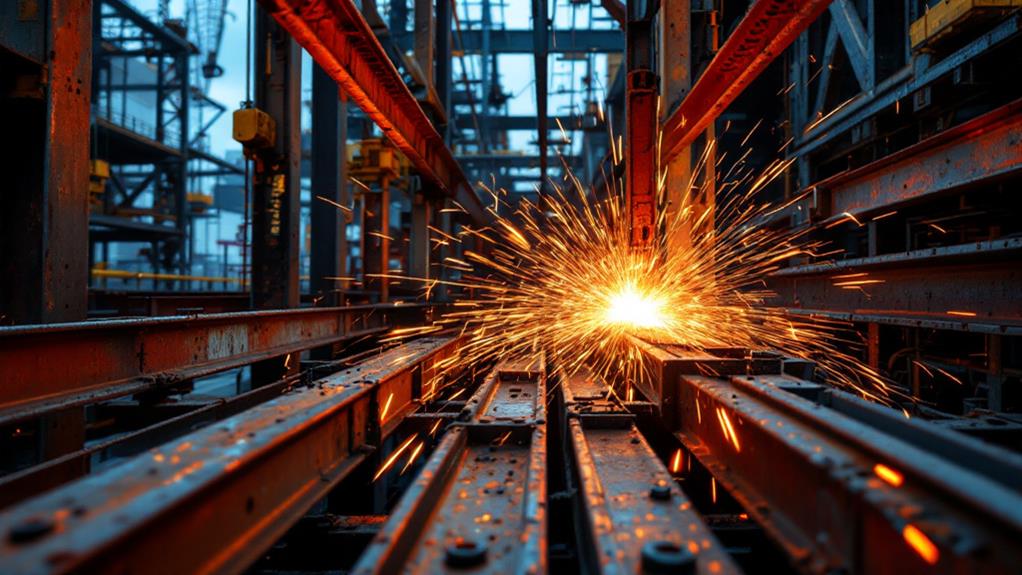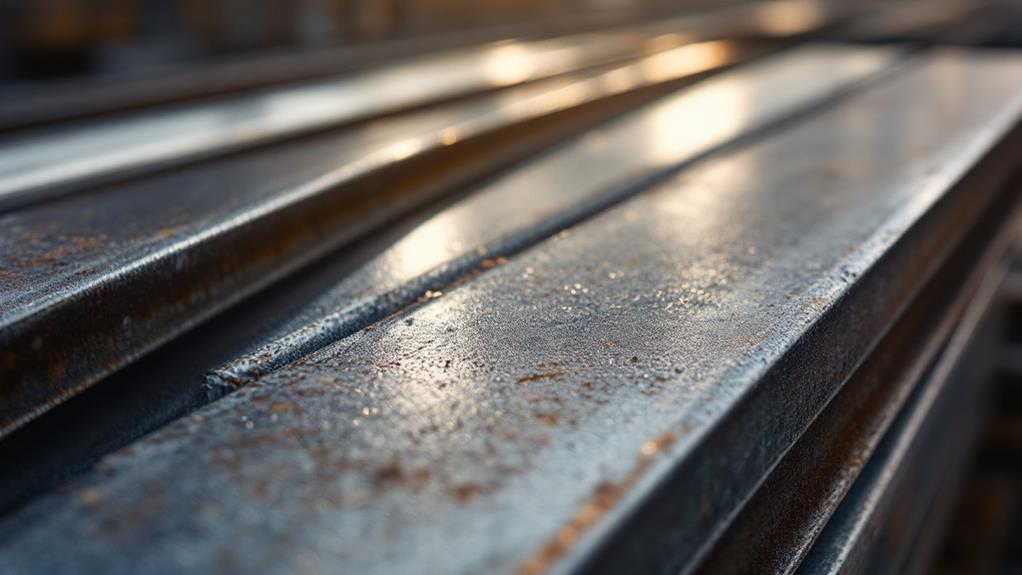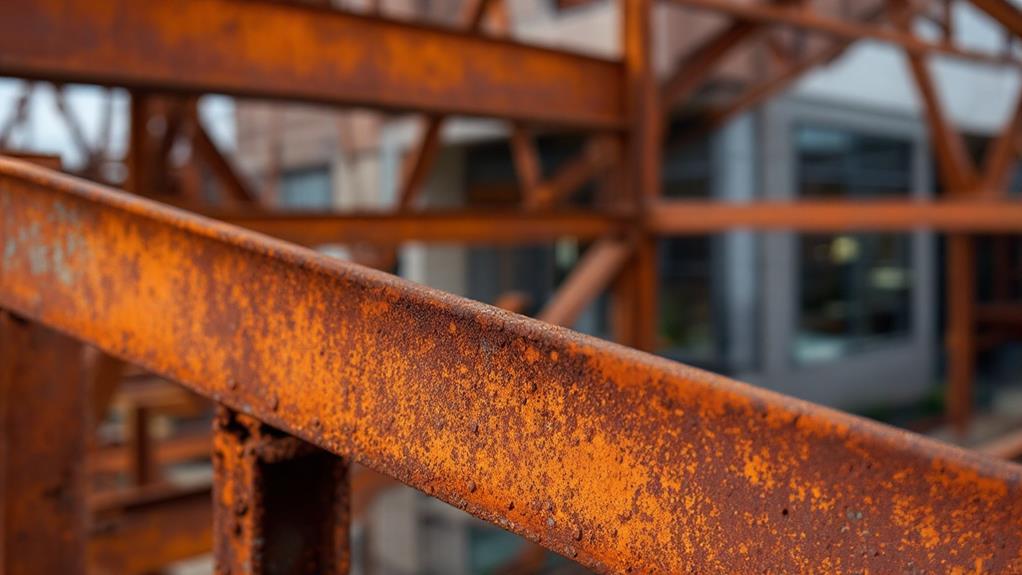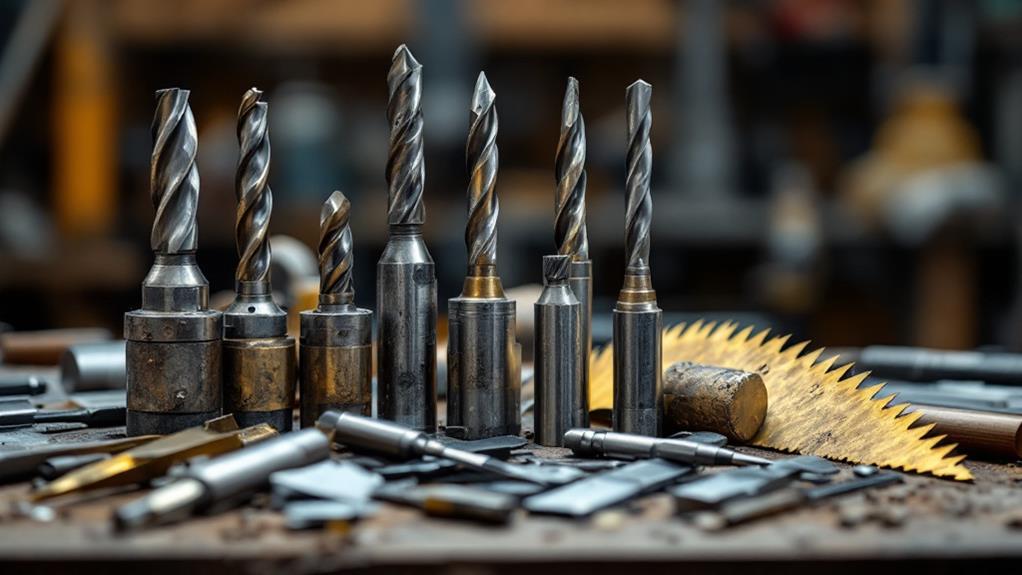Types of Steel Used in Construction Projects: A Complete Guide

In construction, you'll encounter various steel types designed for specific needs. Structural steel forms the structure, while reinforcing steel strengthens concrete. Carbon steel offers versatility and cost-effectiveness, and stainless steel provides corrosion resistance. Weathering steel develops a protective patina, reducing maintenance. High-strength low-alloy steel boasts an impressive strength-to-weight ratio. Tool steel is essential for cutting and shaping materials on-site. Each type has unique properties, from durability to aesthetic appeal, influencing its application in buildings, bridges, and infrastructure. Understanding these distinctions will help you make informed decisions for your construction projects.
Structural Steel
When you think of construction projects, structural steel likely comes to mind. This versatile material forms the backbone of many buildings, bridges, and infrastructure projects. Structural steel comprises various rolled steel shapes and fabricated steel components designed to bear heavy loads and provide essential support.
You'll find structural steel in familiar forms like I-beams, H-beams, and wide-flange beams. These rolled steel shapes offer excellent strength-to-weight ratios, making them ideal for creating sturdy structures. Fabricated steel components, such as trusses, girders, and columns, are custom-made to meet specific project requirements.
Structural steel's popularity in construction stems from its numerous advantages. It's incredibly strong, allowing for taller buildings and longer spans. You'll appreciate its durability, fire resistance, and ability to withstand seismic activity. It's also cost-effective, as it can be quickly erected and easily modified.
When working with structural steel, you'll need to assess factors like grade, yield strength, and tensile strength. ASTM A36 is a common grade for general construction, while high-strength low-alloy (HSLA) steels offer enhanced properties for specialized applications. Understanding these characteristics will help you choose the appropriate structural steel for your project.
Reinforcing Steel
Frequently overlooked but absolutely essential, reinforcing steel plays a key role in construction projects. You'll find this type of steel embedded within concrete structures to enhance their tensile strength and prevent cracking. Reinforcing steel, commonly known as rebar, comes in various forms to suit different construction needs.
The most common type you'll encounter is carbon steel rebar, available in different sizes and grades. For projects requiring corrosion resistance, you might opt for epoxy coated rebar. This specialized coating protects the steel from moisture and chemicals, extending the structure's lifespan.
Another form of reinforcing steel you'll often see is welded mesh. It consists of a grid of steel wires welded together at intersections, providing uniform reinforcement across concrete slabs and walls. Welded mesh is particularly useful in large-scale projects where time and labor efficiency are of great importance.
When selecting reinforcing steel for your project, consider factors such as load-bearing requirements, environmental conditions, and budget constraints. Proper installation and spacing of reinforcing steel are critical to ensuring the structural integrity and longevity of your construction project.
Carbon Steel

Nearly every construction project relies on carbon steel, making it the backbone of the industry. This versatile material is an alloy of iron and carbon, with the carbon content typically ranging from 0.05% to 2.1%. You'll find carbon steel in various forms, including structural beams, plates, and reinforcing bars.
Carbon steel's properties make it ideal for construction. It's strong, durable, and resistant to wear and tear. The mild steel composition, containing up to 0.3% carbon, is particularly popular due to its malleability and weldability. This allows for easy shaping and joining of components on-site.
You'll appreciate carbon steel's cost-effectiveness compared to other steel types. It's readily available and can be produced in large quantities, making it an economical choice for your projects. Carbon steel properties also include good heat conductivity and magnetic characteristics, which can be beneficial in specific applications.
When using carbon steel, you should be aware of its susceptibility to corrosion. To mitigate this, you can apply protective coatings or use galvanized carbon steel for improved rust resistance. By understanding carbon steel's strengths and limitations, you can make informed decisions about its use in your construction projects.
Stainless Steel
While carbon steel dominates many construction projects, stainless steel offers unique advantages in specific applications. You'll find stainless steel used in environments where corrosion resistance is critical, such as coastal areas, chemical plants, and food processing facilities. Its ability to withstand harsh conditions makes it an excellent choice for long-lasting structures and components.
Stainless steel's aesthetic appeal is another key factor in its use. You'll often see it in modern architectural designs, providing a sleek, contemporary look that's easy to maintain. It's commonly used for facades, handrails, and decorative elements in both interior and exterior applications.
When selecting stainless steel for your construction project, you'll need to take into account the specific grade. The most common grades are 304 and 316, with 316 offering superior corrosion resistance, especially in marine environments. While stainless steel is more expensive than carbon steel, its durability and low maintenance requirements can make it cost-effective in the long run. You'll also appreciate its strength-to-weight ratio, which allows for thinner, lighter structures without compromising on strength.
Weathering Steel

Weathering steel, also known as Cor-Ten steel, offers a unique combination of durability and aesthetics for construction projects. This type of steel forms a protective rust-like appearance when exposed to the elements, providing enhanced corrosion resistance without the need for painting. You'll find weathering steel used in various applications, including bridges, buildings, and outdoor sculptures.
One of the main advantages of weathering steel is its low maintenance requirements. Once the protective patina forms, it continues to safeguard the underlying steel from further corrosion. This self-healing property makes it an excellent choice for structures in harsh environments or areas with limited access for maintenance.
When using weathering steel in your construction project, you should consider its unique color and texture. The rustic appearance can add character to your design, but it may not be suitable for all architectural styles. Additionally, you'll need to guarantee proper drainage to prevent water accumulation, which can compromise the steel's performance. While weathering steel offers many benefits, consulting with structural engineers is crucial to determine if it's the appropriate choice for your specific project requirements.
High-Strength Low-Alloy Steel
For construction projects requiring exceptional strength without excessive weight, High-Strength Low-Alloy (HSLA) steel is an ideal choice. This type of steel offers improved mechanical properties compared to carbon steel, while maintaining excellent weldability characteristics. You'll find HSLA steel in various applications, including bridges, towers, and large buildings where structural integrity is paramount.
HSLA steel's unique composition includes small amounts of alloying elements like copper, nickel, and chromium. These additions enhance the steel's strength and corrosion resistance without markedly increasing its cost. As a result, you can use thinner sections of HSLA steel to achieve the same strength as thicker carbon steel components, reducing overall weight and material costs.
When working with HSLA steel, you'll appreciate its ease of fabrication and welding. Its superior strength-to-weight ratio allows for more efficient designs and faster construction times. Additionally, the improved corrosion resistance of HSLA steel means you'll spend less on maintenance and repairs over the structure's lifetime. By choosing HSLA steel for your construction projects, you're investing in a material that offers long-term durability and performance benefits.
Tool Steel

Tool steel stands out as a specialized category of steel designed for durability and wear resistance. While it's not commonly used in large-scale construction projects, you'll find it in tools and equipment essential for the construction process. Tool steel applications include cutting tools, drill bits, and forming dies used to shape other materials on construction sites.
The unique tool steel properties make it ideal for these demanding tasks. You'll notice its high hardness, which allows it to maintain sharp edges and resist deformation under stress. It also exhibits excellent wear resistance, ensuring tools remain effective for longer periods. Tool steel's ability to withstand high temperatures without losing its strength is another key feature you'll appreciate in construction settings.
When selecting tool steel for your construction tools, consider the specific requirements of your project. Different grades offer varying levels of toughness, heat resistance, and machinability. You'll find that some tool steels perform better for impact resistance, while others excel in high-temperature applications. By choosing the right tool steel, you'll enhance the efficiency and durability of your construction equipment, ultimately contributing to the success of your projects.



